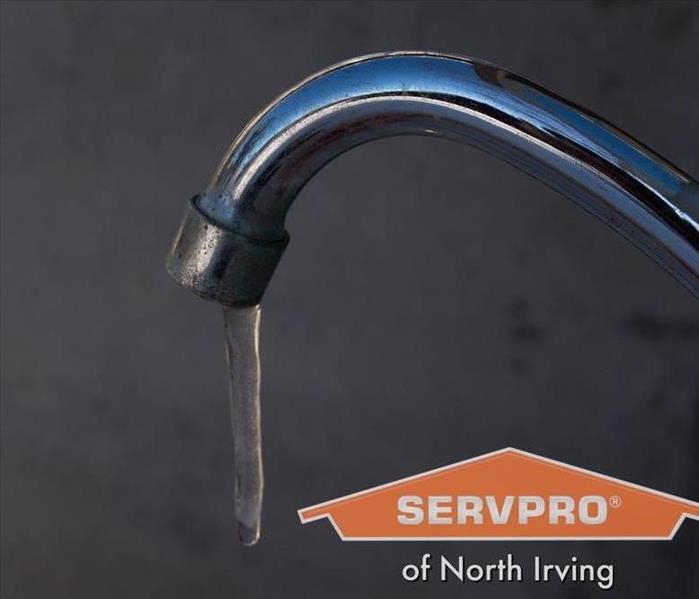How to Prevent Damage from Frozen Pipes
2/10/2022 (Permalink)
Frozen water pipes can cause disruption to your household and a tremendous amount of damage. Apart from blocking the water flow, a frozen pipe can burst when the ice blockage thaws. This can spew gallons of water into your home, resulting in extensive water damage. In addition, if you ignore water damage restoration, you could face severe mold problems in your home.
The Environmental Protection Agency (EPA) recommends hiring a water damage restoration professional who can also deal with mold remediation.
There are several steps you can take to prevent damage from frozen pipes. First, it’s a good idea to learn what happens when water freezes in a pipe. Then you should take steps to prevent water pipes from freezing. And lastly, it’s necessary to know how to thaw a frozen water line safely.
Simple Ways to Prevent Damage from Frozen Pipes
Here are some ways to avoid property damage that can occur if plumbing pipes freeze in winter.
1. Identify Pipes at Risk of Freezing
The most common pipes that freeze when temperature plummets are outdoor hose bibs, water sprinkler lines, and swimming pool supply lines. Indoors, uninsulated water pipes in basements, attics, crawl spaces, and garages are also at risk of freezing.
When the water in pipes freezes, two things can cause them to burst. First, water expands when it turns to ice, and this can cause cracks in plastic and metal piping. Second, pressure on pipes builds behind the blockage.
2. Insulate Water Supply Lines and Indoor Spaces
The best way to prevent plumbing damage from frozen lines is to insulate hot and cold water pipes. Pipe insulation is relatively inexpensive compared to paying for costly water damage restoration. In addition, it’s crucial to add insulation to basements, crawl spaces, and attics.
Not only will insulation prevent pipes from freezing, but you will save money on energy costs.
3. Drain Outdoor Supply Lines During Winter
A simple way to prevent outdoor pipes from freezing is to drain water from them. First, close the supply valve to sprinkler systems, garden hoses, and hose bibs. Then open the bibs to let water drain.
4. Take Steps to Prevent Frozen Pipes
During a particularly cold snap, it’s vital to ensure indoor areas are warm enough. Keep the thermostat at least 65°F day and night. It is also a good idea to open internal doors and kitchen and bathroom cabinet doors. This allows warmer air to circulate throughout the house and keep pipes warm.
Another handy tip to prevent pipes from freezing is to run a trickle of water from faucets when there is a risk of a hard freeze.
5. Learn How to Unfreeze Pipes
If a water pipe freezes, it’s vital to thaw the ice blockage gently to prevent extensive damage. Here is what to do:
- Shut off the main supply of water
- Open the faucet to allow the thawing water to flow freely.
- Locate the frozen section of the pipe.
- Apply heat using a hair dryer, electric heating pad, or portable space heater.
- Continue applying gentle heat until regular water pressure returns.
What happens if the pipe bursts and causes a flood? After stopping the water flow, it’s vital to call in water damage restoration experts. In Dallas, SERVPRO has years of experience restoring properties after a flood. Contact us today at (817) 589-1499 to find out about our Fort Worth water damage restoration services.





 24/7 Emergency Service
24/7 Emergency Service
